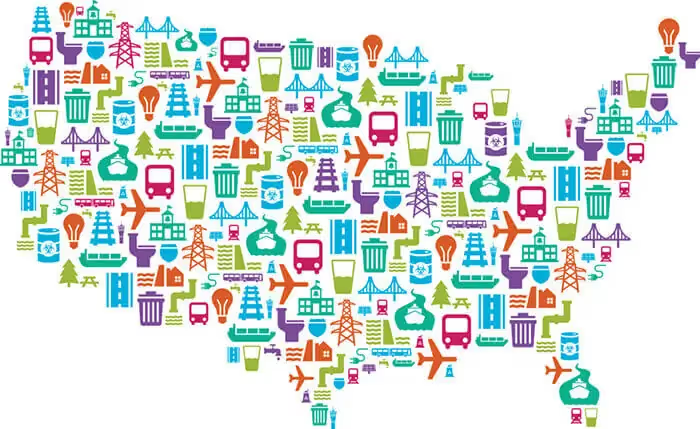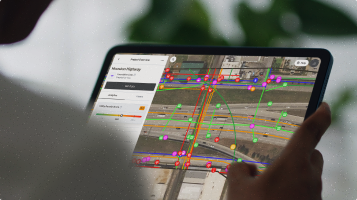ASCE Report 2021
Written by

Published on
April 30, 2021


Table of contents
The American Society of Civil Engineers has recently released its annual report card for America's infrastructure giving it an overall Grade Of C-, not exactly the kind of thing you proudly present to your friends and relatives.
The report is issued every year by the ASCE Committee On America’s Infrastructure with graded categories including bridges, dams, energy wastewater, hazardous waste, railroads and transit among others.
Each Category is examined using a set of criteria; capacity, condition, funding, future need, operation and maintenance, public safety, resilience and innovation.
It is important to note that in addition to the national Report Card, ASCE prepares state Infrastructure Report Cards on a rolling basis.
Although many categories show positive trends, the report is not without criticism of the general status quo in several of the country's key infrastructure sectors.
According to the 2021 Report Card, a water main break occurs every two minutes somewhere in the U.S. resulting in the loss of an estimated 6 billion gallons of treated water every day. That is just over 4 million gallons of water 'wasted' per minute, a mind-boggling figure in today's world.
Another sector shown to be suffering is transit and roads, with growing wear and tear leaving 43% of all public roadways in poor or mediocre condition.
Considering there are over 4 million miles of public roadways in the United States, the economic ramifications are immense as motorists are forced to spend nearly $130 billion each year on extra vehicle repairs and operating costs.
This situation is not temporary or new, not limited to motorways, as over a 10-year period across the country, 19% of transit vehicles, and 6% of fixed guideway elements like tracks and tunnels were rated in “poor” condition.
The silver lining of this report is that State and local governments are making progress with increased federal investments and legislative reforms.
For example, 37 states have raised their gas tax to fund critical transportation investments since 2010 and at least 25 major cities and states now have chief resilience officers in charge of infrastructure.
This positive movement has gained momentum in recent years with 98% of local infrastructure ballot initiatives passing in the November 2020 vote.
Coupled with the recent announcement of President Biden's “Build Back Better” plan proposing over $2 trillion of government investment focusing on public infrastructure and infrastructure development projects it seems that the future should be bright for America's roads and waterways.
It is true that these improvements are made by elected officials but they do not happen in a vacuum as they are often driven by very strong voter support and civilian outreach.
From the industry's perspective, the expected influx in engineering and construction projects is a golden opportunity to introduce innovation into an aging landscape of methodologies and processes used today, a perfect time for stakeholders to adopt new technologies and smarter tools to overcome the challenges they face in their respective fields.
Particularly Interesting is the effect this will have on subsurface infrastructure, a crucial component in each and every sector from water to communications. This Is also amplified by the modern exploration of underground solutions to the optimization of real-estate usage and better conservation of natural resources, with the many utilities 'living' in the underearth about to be joined by many more.
Recent blog posts

Our Newsletter
Join 7k infrastructure professionals
Get monthly insights on ways to build smarter, faster and safer with Utility AI.

.avif)




